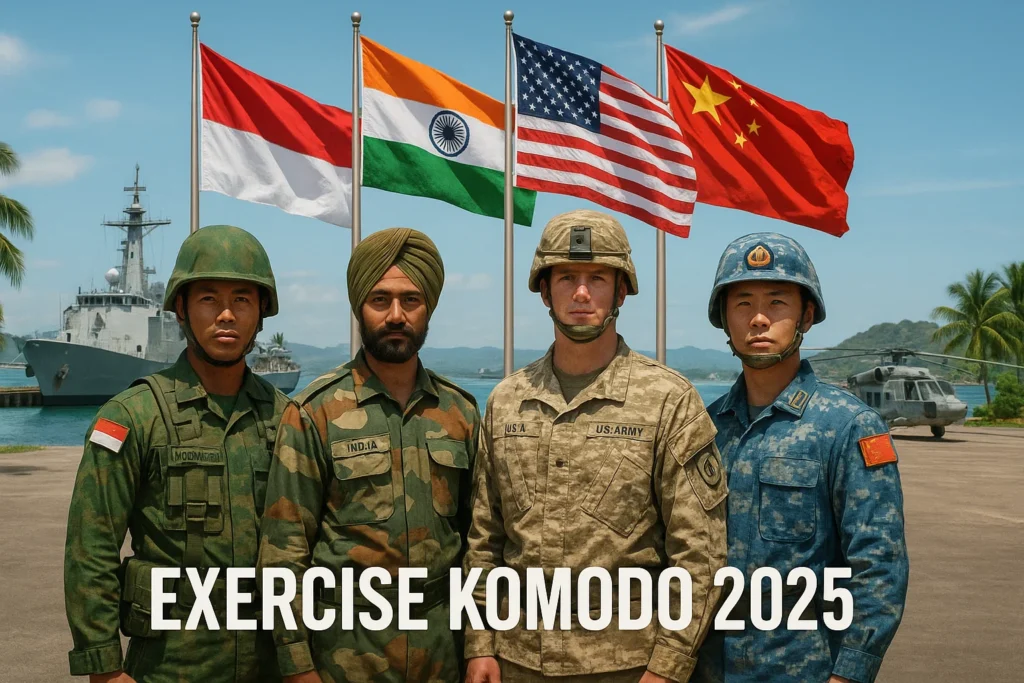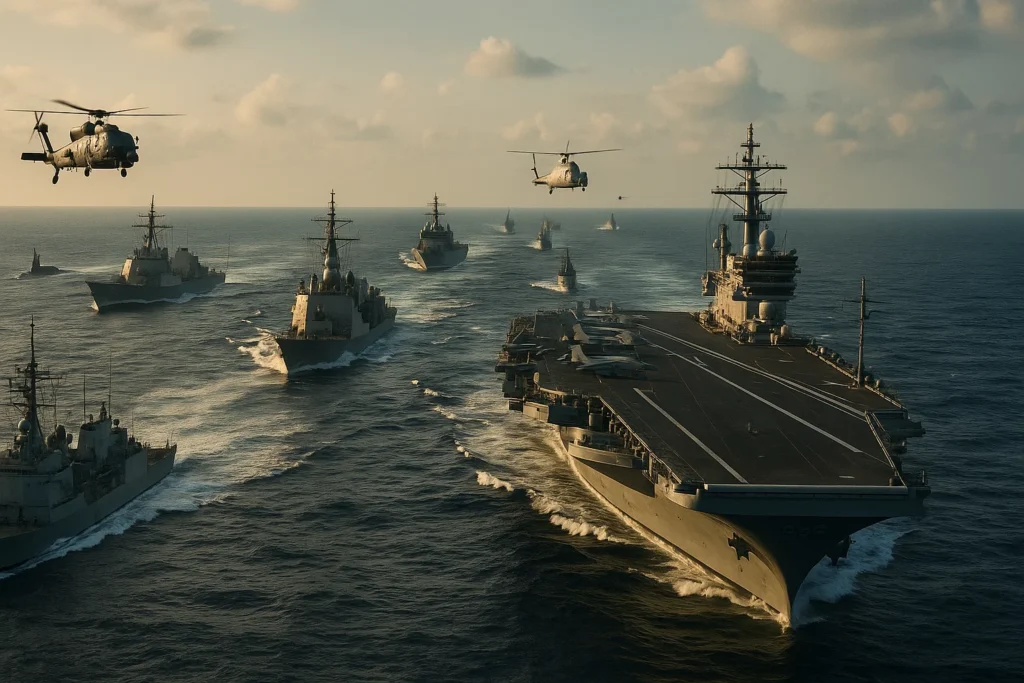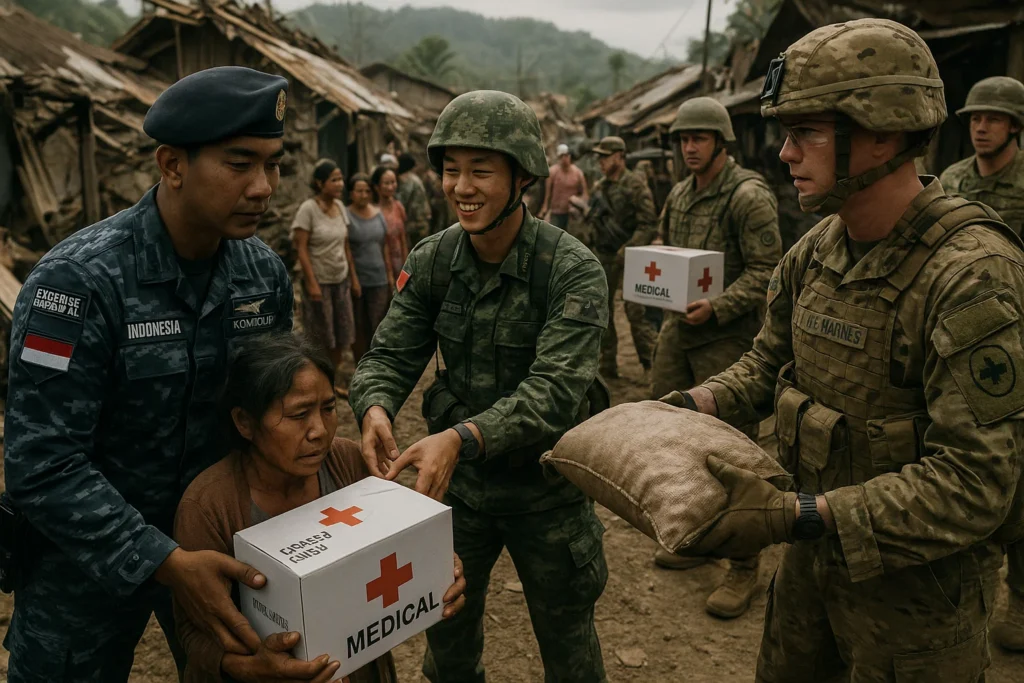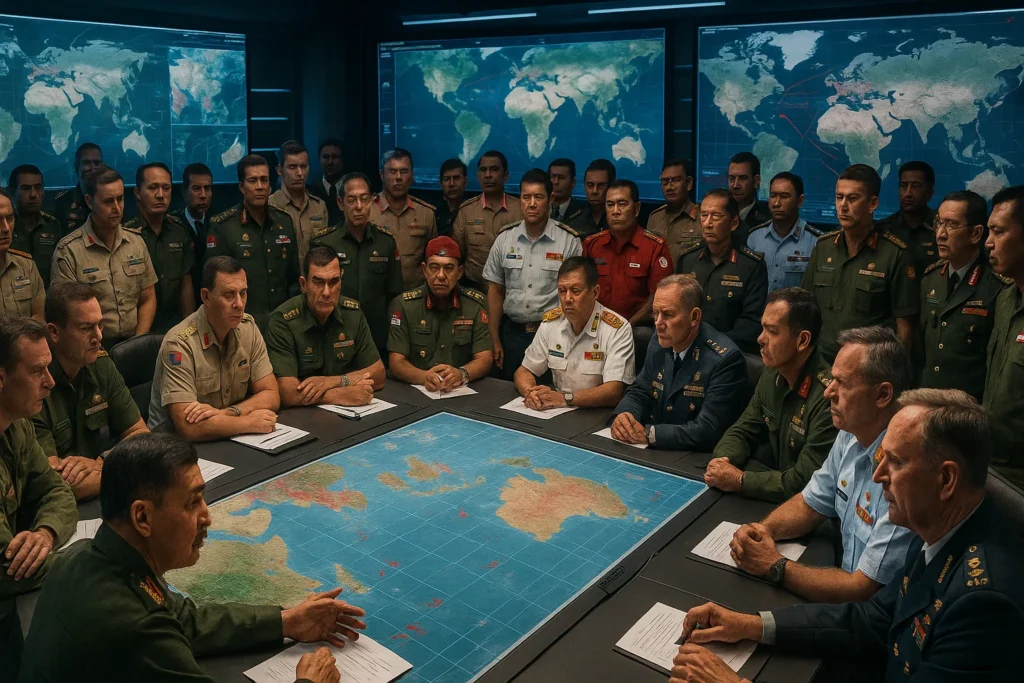
Introduction
Exercise Komodo 2025 (MNEK 2025) is the fifth iteration of the Multilateral Naval Exercise Komodo, hosted by the Indonesian Navy in the waters of Tanjung Benoa, Bali. This biennial event has grown into a significant platform for enhancing maritime cooperation, focusing on non-combat operations such as humanitarian assistance, disaster relief, and maritime security.PMariTimes
Objectives of Exercise Komodo 2025
The primary goals of MNEK 2025 include:
Enhancing Multilateral Maritime Cooperation: Fostering collaboration among navies to address common maritime challenges.
Humanitarian Assistance and Disaster Relief (HADR): Improving readiness and interoperability in responding to natural disasters and humanitarian crises.
Maritime Security: Strengthening collective capabilities to ensure safe and secure seas, focusing on non-traditional security threats.
Participating Countries and Assets
A total of 38 nations participated in MNEK 2025, contributing a diverse array of naval assets:PACOM
Indonesia: Hosted the exercise with 17 warships, including KRI Dewaruci and KRI Diponegoro.Wikipedia
India: Participated with INS Shardul and a P-8 Poseidon Maritime Patrol Aircraft.Wikipedia
United States: Deployed the USS Dewey and a P-8A Poseidon aircraft.United States Navy
Other Notable Participants: Australia (HMAS Hobart), Japan (JS Asahi), France (Vendémiaire), United Kingdom (HMS Spey), and several ASEAN countries.Wikipedia
In total, 19 foreign warships, 7 helicopters, and 3 Maritime Patrol Aircraft took part in the exercise.

Types of Exercises Conducted
Harbor Phase
The initial phase focused on:
International Military Workshops: Discussions on infrastructure repairs and emergency medical responses.PACOM
Community Outreach: Cultural exchanges and public engagement activities.
Sea Phase
This phase included:couriermail
Coordinated Maneuvering: Joint navigation and formation exercises.Antara News
Search and Rescue Training: Simulated operations to enhance interoperability in rescue missions.
These exercises aimed to improve coordination among participating navies in non-combat scenarios. couriermail

Humanitarian and Environmental Initiatives
Beyond military drills, MNEK 2025 emphasized humanitarian and environmental efforts:
Engineering Civic Action Program (ENCAP): Construction of public facilities, such as roads and places of worship, in Antiga Kelod village, Karangasem District
Medical Civic Action Program (MEDCAP): Provision of health services, including general check-ups, dental care, and minor surgeries aboard KRI dr. Wahidin Sudiro Husodo-991.
Environmental Conservation: Activities like mangrove planting, turtle hatchling releases, and beach clean-ups to promote ecological awareness.
Participating Countries and Their Contributions
Exercise Komodo 2025 witnessed the participation of 38 nations, each bringing unique assets and expertise to the table. The diversity of participants underscores the global commitment to maritime cooperation and security.saralstudy.com
Notable Participating Countries and Their Contributions:
Indonesia: As the host nation, Indonesia deployed 17 warships, including KRI Dewaruci and KRI Diponegoro, and facilitated various humanitarian and environmental initiatives.
India: Contributed the amphibious warfare ship INS Shardul and a P-8I Poseidon maritime patrol aircraft, enhancing surveillance and reconnaissance capabilities.
United States: Deployed the USS Dewey, an Arleigh Burke-class guided-missile destroyer, and a P-8A Poseidon aircraft, emphasizing its commitment to Indo-Pacific security. United States Navy
Australia: Participated with HMAS Hobart, showcasing advanced air warfare capabilities.
Japan: Sent JS Asahi, a modern destroyer equipped with cutting-edge technology.
France: Contributed the frigate Vendémiaire, reinforcing its presence in the Indo-Pacific region.
United Kingdom: Deployed HMS Spey, highlighting its commitment to regional stability.
Russia: Participated with RFS Aldar Tsydenzhapov and RFS Rezkiy, enhancing the exercise’s multilateral nature.Wikipedia
Singapore: Contributed RSS Valour and RSS Fortitude, demonstrating its maritime security capabilities.
Philippines: Sent BRP Ramon Alcaraz, emphasizing regional collaboration.
Vietnam: Participated with VPNS HQ-09, showcasing its naval proficiency.
Italy: Deployed Antonio Marceglia, reflecting its commitment to international maritime cooperation
Thailand: Contributed HTMS Pattani, enhancing regional naval interoperability.
Malaysia: Participated with KD Kelantan and KD Selangor, reinforcing its maritime presence.
South Korea: Sent ROKS No Jeok Bong, highlighting its advanced naval capabilities.
These diverse contributions facilitated a comprehensive exercise encompassing various naval operations and humanitarian initiatives.

Benefits to Participating Countries
Engaging in Exercise Komodo 2025 offered multifaceted benefits to the participating nations:
1. Enhanced Interoperability
Joint exercises fostered seamless coordination among diverse naval forces, enabling effective collaboration during real-world operations.
2. Capacity Building
Sharing best practices and conducting joint training sessions enhanced the operational capabilities of participating navies, particularly in humanitarian assistance and disaster relief (HADR) missions.
3. Strategic Partnerships
Bilateral and multilateral engagements during the exercise strengthened diplomatic ties and built trust among nations, contributing to regional stability.
4. Technological Exchange
Exposure to advanced naval technologies and platforms facilitated knowledge exchange, promoting modernization and innovation within participating navies.
5. Cultural Understanding
Cultural exchanges and community outreach programs fostered mutual respect and understanding among diverse cultures, enhancing people-to-people connections.
Broader Implications of Exercise Komodo 2025
The successful execution of Exercise Komodo 2025 has far-reaching implications:
Regional Stability: By promoting collaboration and understanding, the exercise contributes to peace and stability in the Indo-Pacific region.
Disaster Preparedness: Enhanced HADR capabilities ensure swift and coordinated responses to natural disasters, mitigating their impact.
Maritime Security: Joint efforts in addressing non-traditional security threats, such as piracy and illegal fishing, bolster maritime safety.
Environmental Conservation: Initiatives like mangrove planting and beach clean-ups underscore the commitment to preserving marine ecosystems.
Conclusion
Exercise Komodo 2025 exemplifies how collaborative efforts among nations can address shared challenges in maritime domains. Through joint exercises, humanitarian initiatives, and environmental conservation, participating countries demonstrate a collective commitment to a secure and stable maritime environment.
FAQ
Exercise Komodo 2025 is a large-scale multilateral naval drill hosted by Indonesia. It brings together navies from around the world to strengthen maritime cooperation, conduct disaster relief simulations, and promote peace and stability in the Indo-Pacific region.
Over 40 countries are expected to participate in Exercise Komodo 2025, including India, the United States, China, Australia, Japan, and many ASEAN member states. This makes it one of the biggest non-combat naval exercises in the region.
The primary goal of Exercise Komodo is to enhance joint naval capabilities for humanitarian assistance, disaster relief (HADR), and to promote regional maritime security through cooperation and non-combat operations.
Countries benefit by improving their naval coordination, sharing best practices, building trust with allies, and preparing for real-world crises like tsunamis, earthquakes, and maritime threats. It also helps in strengthening diplomatic ties between the nations.
The exercise includes a range of non-combat drills such as search and rescue operations, naval medical aid, engineering support, amphibious landings, maritime patrols, and community outreach programs.
Related Keywords
Exercise Komodo 2025, Indonesia naval exercise, multilateral maritime drills, Indo-Pacific naval operations, Komodo naval exercise participants, India in Exercise Komodo, US Navy Komodo 2025, benefits of Exercise Komodo, humanitarian assistance naval drills, disaster relief military exercise, regional maritime security, Komodo 2025 participating countries, maritime cooperation in Asia, naval diplomacy, joint military exercises, international naval partnership, Exercise Komodo warships, Komodo military exercise Indonesia, global naval collaboration, Komodo 2025 objectives, Komodo 2025 navy list, Komodo 2025 military strategy, Indo-Pacific security cooperation, Exercise Komodo outcomes, Komodo 2025 external links, defense cooperation Indonesia, Asia Pacific joint military drills
